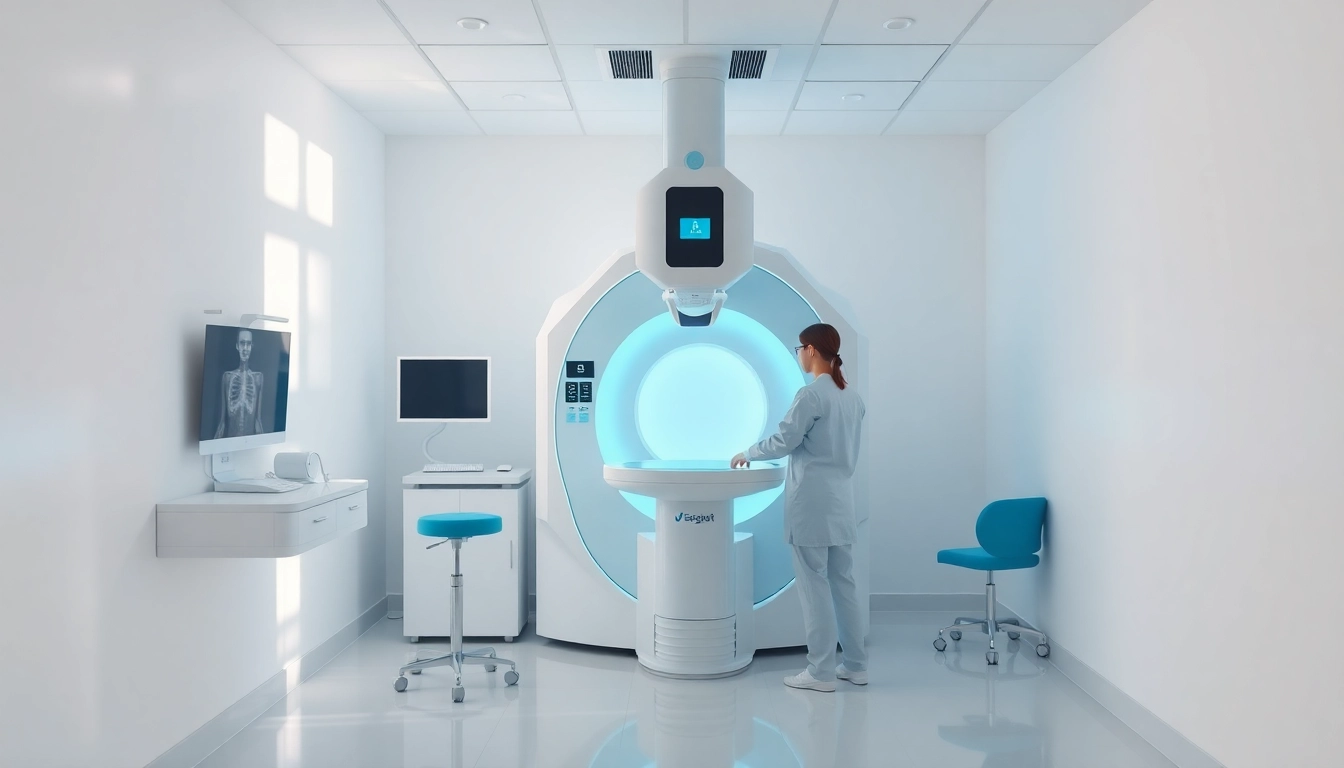Choosing the Best X-ray Machine for Small Clinics: Top Options and Key Features
Understanding the Needs of Small Clinics
In the ever-evolving landscape of healthcare, small clinics play a vital role in delivering accessible medical services to communities. However, these clinics often face unique challenges and constraints that can complicate their operational capabilities, particularly when it comes to acquiring essential medical equipment like X-ray machines. Selecting the best X-ray machine for small clinics requires a deep understanding of these needs and challenges, ensuring that the chosen equipment not only fits the physical space but also aligns with their clinical objectives and patient care standards.
Common Challenges Faced by Small Clinics
Small clinics often operate with limited resources, which can strain their ability to provide high-quality imaging services. Common challenges include:
- Budget Constraints: Financial limitations are a primary concern. Small clinics may struggle to afford high-end imaging technology that larger facilities can manage.
- Space Limitations: Many small clinics must fit their equipment into compact areas, making it essential to choose machines that are both efficient and space-saving.
- Staffing Issues: With smaller teams, there may be limited personnel available for training and maintenance of sophisticated machinery.
- Patient Volume Fluctuations: The patient load can vary significantly, making it difficult to justify the investment in high-capacity equipment that may not be used consistently.
Budget Considerations for X-ray Machines
When looking at X-ray machines, budget considerations extend beyond the initial purchase price. Factors such as maintenance, operational costs, and potential upgrades must also be analyzed:
- Purchase Price: Identify machines that offer the best value for the specifications you need.
- Operating Costs: Consider the costs associated with running the machine, including electricity, film (if applicable), and consumables.
- Maintenance Costs: Regular maintenance cannot be overlooked; budget enough for service contracts to minimize downtime.
- Financing Options: Explore leasing options or flexible financing that can alleviate the up-front monetary burden.
Importance of Space and Efficiency
Space management is crucial in a small clinic environment. Choosing an X-ray machine that is compact yet efficient can substantially enhance workflow without overwhelming the physical layout. Look for features such as:
- Portable Designs: Some models are designed specifically for smaller spaces or mobile use, allowing for flexibility.
- Integrated Technology: Machines that combine multiple functions can save space and reduce the need for multiple devices.
- Efficient Workflow: Consider options with quick startup times and user-friendly interfaces that enhance patient throughput.
Key Features of the Best X-ray Machines for Small Clinics
When selecting the most suitable X-ray machine, several key features contribute significantly to performance, usability, and maintenance. These include:
Size and Portability
The size of an X-ray machine should be a primary consideration for small clinics. Compact models allow clinics to maximize their limited space. Portable machines can be especially beneficial for clinics that may require equipment to be moved around or taken to different locations.
Image Quality and Technology
High-quality imaging is essential for accurate diagnoses. The state-of-the-art X-ray machines incorporate advanced image processing technologies that can enhance image clarity and reduce radiation exposure. Understanding resolution specifications, contrast sensitivity, and the ability to produce digital images plays a crucial role in making an informed decision.
User-Friendliness and Maintenance
User-friendly interfaces reduce the time and training required for staff. Machines that allow easy access to controls and settings enhance workflow and minimize errors. Additionally, machines designed for easier maintenance help to keep them operational without excessive downtime.
Top Recommended X-ray Machines for Small Clinics
Identifying the right machine requires a comparative analysis of the leading models available, based on the aforementioned features and user experiences.
Comparative Analysis of Leading Models
In the marketplace, several models stand out for small clinics. Here’s a closer look at a few top contenders:
- Machine A: Known for its compact design and superior image quality, this model serves clinics with limited space but high expectations for imaging.
- Machine B: A portable machine that excels in user-friendliness, it’s ideal for clinics that require mobility in their imaging services.
- Machine C: An advanced option featuring digital imaging capabilities, this machine offers a great balance between quality and maintenance ease.
User Reviews and Expert Opinions
User reviews and expert opinions can provide valuable insight into the practicality of different models. Seek testimonials that highlight real-world applications, reliability, and after-sales support. Expert opinions might evaluate the technology and adaptability of models, creating a more informed picture of what to expect.
Cost vs. Benefit Evaluation
Performing a cost versus benefit analysis helps clinics to weigh the long-term advantages against the initial investment. Look for potential growth in patient referrals through higher quality imaging, improved operational efficiency, and even enhanced staff and patient satisfaction.
Regulations and Compliance in Medical Imaging
Operating an X-ray machine in a clinic encompasses more than just choosing the right device; it involves navigating a landscape of regulatory compliance and safety standards.
Understanding Licensing Requirements
Each state and locality has its own licensing regulations regarding the use of medical imaging equipment. Clinics must ensure that their staff is adequately trained and licensed to operate the X-ray machines, as well as understand the protocols necessary for compliance.
Safety Standards for Equipment
Adhering to safety standards set forth by various regulatory bodies, such as the FDA, is critical. These regulations ensure that equipment is safe for both staff and patients. Clinics should schedule regular safety checks and maintenance to remain compliant.
Best Practices for Compliance
To effectively maintain compliance, clinics should develop structured protocols that encompass routine maintenance, staff training, and ongoing education on changing regulations. Documenting compliance efforts can also aid in passing inspections and audits smoothly.
Future Trends in X-ray Technology for Small Clinics
The field of medical imaging is rapidly transforming, with emerging technologies that promise enhanced features for small clinics. Understanding these trends can help clinics stay ahead of the curve.
Innovations to Look For
Expect to see advancements in imaging technology that focus on artificial intelligence and machine learning. These innovations can offer smarter imaging, quicker diagnoses, and improved patient outcomes.
Integration with Digital Medical Records
Seamless integration with electronic health record (EHR) systems enables clinics to manage patient information more effectively, streamlining workflows and improving the patient experience.
Impact of Telemedicine on X-ray Usage
With the rise of telemedicine, small clinics may need to adapt their imaging capabilities to provide remote consultations. This can include enhancements in the digital transmission of images and improved access to specialist consultations.
Conclusion
Choosing the best X-ray machine for small clinics is an essential decision that requires careful consideration of several factors, including budget, space, and technological capabilities. By understanding the unique needs of small clinics and keeping abreast of the latest trends and regulations, clinic owners can select equipment that not only meets their current demands but also positions them for future growth and success in providing high-quality patient care.



